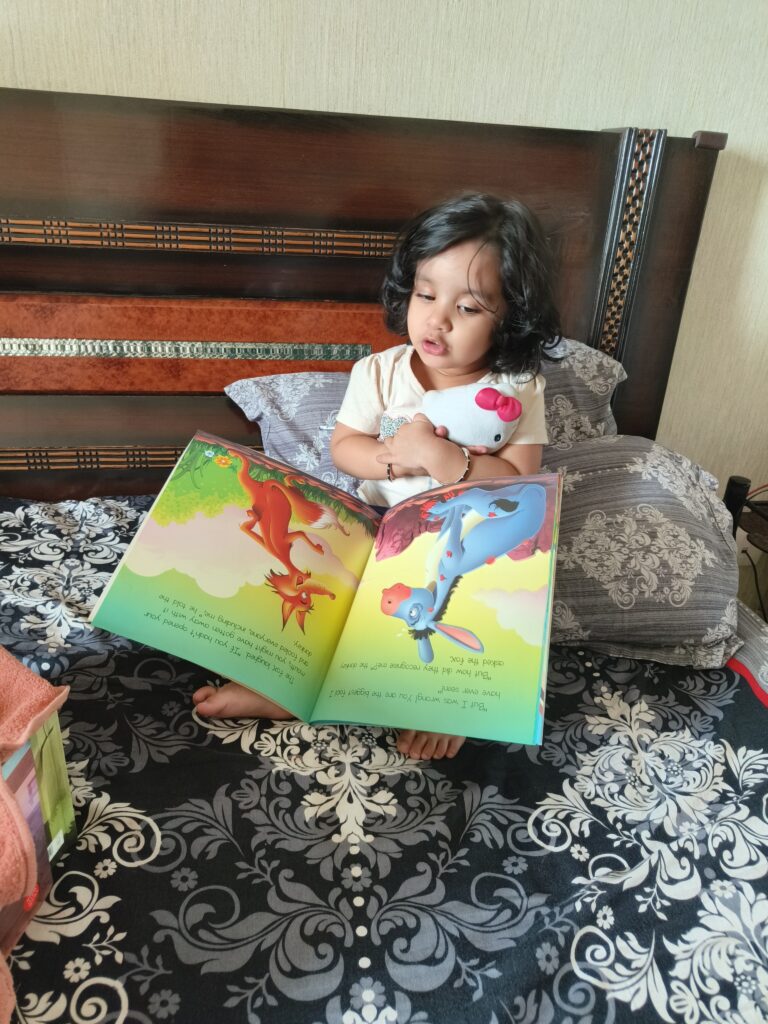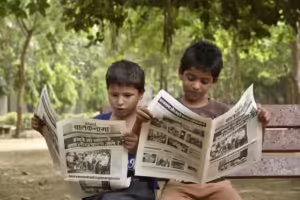Storytelling is one of the oldest universal human activities, there from the beginning, covering ancient to modern times. Stories have always been the foundation of connecting human beings, sharing experiences, and passing on knowledge. Personal narratives can be shared between friends or reading about far-off places and people, but stories always help people understand their world.
As a human, we are calibrated to respond to stories as they answer to our emotions, ignite the imagination, and give us the experience of life through someone else’s eyes. Storytelling though has changed much with the passage of time-from the traditional oral word to writings in books, films, and now digital content, a platform that had remained relatively consistent and influential was and continues to be the magazine.
Magazines have been playing a fundamental role in telling stories and reaching diverse audiences and hence play a pivotal role in sustaining the art of storytelling.
What are the Foundations of Storytelling?
Emotional Power of Stories
The power of storytelling lies in its capacity to touch people’s emotions. Stories make us feel something—joy, sadness, excitement, or even fear. The emotions experienced in reading a story or hearing one are what mark the memory; think about the last great story you read. It doesn’t matter whether it was a novel, an article, or a piece of journalism—it most likely affected you because it made you feel a certain way.
A good story connects to emotions. It makes them interested if something can relate to their emotions. That’s why good stories are more than collections of facts, making us care for what is happening.
Basic Components of a Story
Every story contains some basic components that make the story work.
Introduction: These are the introductory lines that get the reader familiar with the characters, setting, and background. This is what makes a reader interested in knowing more.
Conflict: The main problem or challenge that the characters will be dealt with. In the absence of conflict, no story exists. Conflict may be internal, which happens emotionally or mentally, or may be external, being a physical obstacle or situation.
Resolution: How the conflict is resolved or what the characters learn from the experience. It provides closure to the story while giving it a very meaningful takeaway for the reader.
Relatable Characters
A good storyline usually has characters who are either powerful and relatable or personalities that even the coldest person could not help but be interested in. Whether it is an individual with a decision to make, a group of people fighting for something bigger than themselves, or even an adventure in a world of make-believe, characters make even the farthest imagination real. Their stories and their ends are hard to ignore.
What is the Role of Magazines in Enhancing Storytelling Skills?
Early Days of Magazines:
The art of storytelling has been brought to the world by magazines for more than one hundred years. Nineteenth-century literary magazines were also the primary source of fiction where the greatest writers of the time used to publish serials. From that great line of 19th-century literary magazines, which have published the works of such literary titans as Charles Dickens and Edgar Allan Poe, to the new generation of magazines like The New Yorker, Harper’s, and The Atlantic, magazines have always been home to some of the most memorable stories ever told.
They further opened avenues to writers and reporters to tell long-form stories, blending journalistic factuality with narrative to engage readers. Early publications formed a type of storytelling that would be both entertaining and informative at the same time.
Making Stories Accessible
Magazines democratized storytelling by bringing it to everyone’s doorstep. Few might not have the time to read a novel, but short story, essay, or a feature article in a magazine finds its niche in busy lives. As such, magazines have virtually acted as an intermediary space between the long-feasting literature and the speed of news consumption. It serves for the pleasuring of deepened, richly experienced stories, rather than requiring like a book the toil of time commitment.
Stories reach readers all around the globe in the physical print and digital realms. Through the years, magazines have been an essential vehicle to expand the extent of storytelling through the voices of various groups of people, thus connecting to a tremendous audience. This is especially important when it comes to kid’s magazines, which play a vital role in making stories accessible to younger audiences, helping them learn and grow through engaging content tailored for their age group.
Paving a Way for the Digital World
Technology, in the form of the internet, has galvanized change for many print magazines to adapt or perish. Print magazines that once dominated the market now have to compete with online versions. Many publications have used online platforms to provide delivery of e-magazines, blogs, podcasts, and other forms of multimedia storytelling. This development has really opened up the avenue of reaching a more substantial audience while magazines learn new ways to tell their stories.
For example, what might have once been a feature article in a printed magazine is now a multipage film, imbued with audio clips or even photo galleries. This makes the reader’s experience richer because it enables them to interact with the story itself in a more dynamic way.
Representing Diverse Voices via Magazines
Giving Prominence to Diverse Voices
In a way, magazines have become a powerful medium in giving a voice to different perspectives. This is evident by the stories that have been published over the years from underrepresented communities and the diverse voices of people who otherwise may not have an opportunity to have been heard. In the context of LGBTQ+ voices, women, people of color, or international perspectives, magazines have in a way helped widen the scope of storytelling. These mixed stories also contribute to the global conversation about important issues.
For example, Teen Vogue is now one of the magazines of social justice, giving voices to young activists. Similarly, fashion magazines such as Vogue have become inclusive by considering models, designers, and writers from a vast backgrounds.
Editors as Gatekeepers
Editors are vital narrators because they are the ones responsible for the printed-out stories or digital format. A gatekeeper, in choosing those stories to publish, makes a difference in the type of stories that reach the readers. In deciding on which stories to publish, editors choose content that reflects the issues concerning society or the period, giving it a life that meets the needs of the magazine’s audience.
Good editors draw the best out of a story, working with the writers to get the right narrative.
Their choice will shape the cultural and political landscape by bringing out what is important and current.
Magazines and the Future of Storytelling
Storytelling in New Media
This new experimentation with new forms of media gradually changes what magazines are: from traditional print, the articulations of stories now evolve into videos, podcasts, and interactive articles. Wired and National Geographic, for instance, made huge transitions to multimedia storytelling. The ability to tell stories and increase readers’ experience through these new forms of storytelling makes subjects come alive in ways that were impossible to recount before-to integrate textuality with audio and visuals among other elements.
Niche Magazines for Specific Audiences
In the last couple of years, we have seen an increased trend of niche magazines for audiences or hobbies. A perfect example of niche magazines is wellness to tech- centric publications. With these forms of niche magazines, readers get to tune in stories that speak directly to passions or hobbies. Niche magazines sport tight-knit communities of readers who feel deep connections to the stories they feature.
Reader Participation
Many current magazines seek readers to take part in the storytelling process. Whether that is done with reader submissions of stories, opinion pieces, or through social media that interreacts with readers, magazines are asking readers to claim the story. Shared ownership is the reason why readers become more invested in a magazine and encourages a variety of voices within the book.
Why Storytelling in Magazines Still Matters?
Interconnectedness in a World That Keeps Speeding Up
The fast pace of today’s world demands that the populace gulp down information served in quick bites, and magazines offer a way to read with more depth and thought in stories. Magazines offer space for sitting down and reading into a carefully crafted narrative that removes their gaze from the hive of social media and 24-hour news cycles. Magazines remind us of the importance of slowing up to engage with a story in a deeper way.
Culture and Trends. Magazines have continued to shape cultures and trends over time. Sometimes, an article in a magazine can become the base for discussions or create public opinion or even become the impetus for change. Investigative reporting, profiles of cultural figures, detailed interviews among many others have impacted our views on the world and how things should be. Magazines do not report news but define what news are important .
Empathy through Stories
The power of storytelling is one of its abilities to promote empathy. Through reading stories about the lives and problems of various individuals, it then puts readers in a better position to grasp what may exist outside of their own world of experience. Magazines help open this door further by giving readers a glimpse into other cultures, perspectives, and problems and makes them more aware of what is happening in the world around them.
Conclusion
Storytelling has been a vital part of human life over the centuries, and magazines have significantly contributed to it thriving through the ages. Whether in print or electronically made, magazines continue to bring far-flung voices and interesting stories to one’s doorstep. As the world changes, the art of storytelling will become different as well.
However, the soul of this art does not change: bonding, mutual experiences, and a deeper understanding of each other. The next time you read a magazine or an online article, take a moment to appreciate the power of the story being told.



